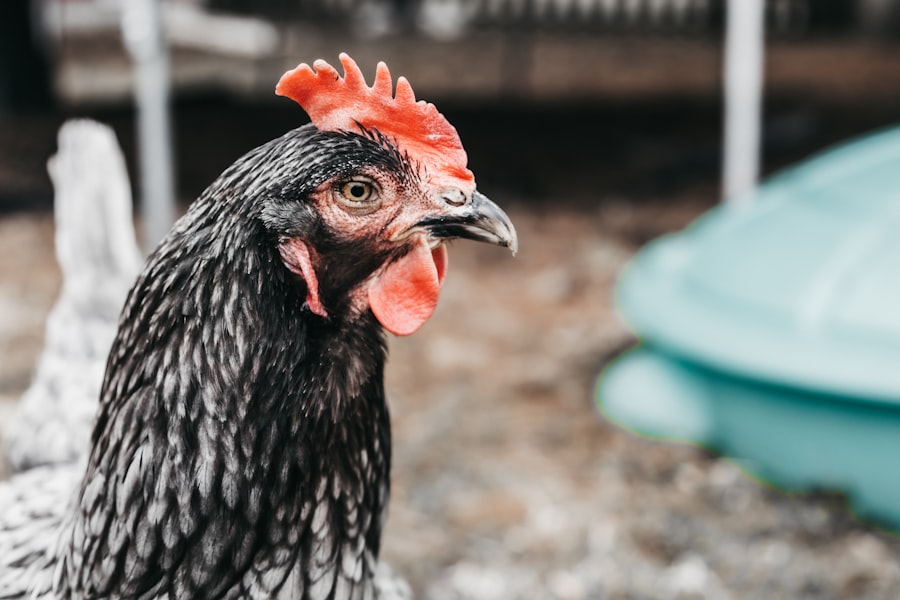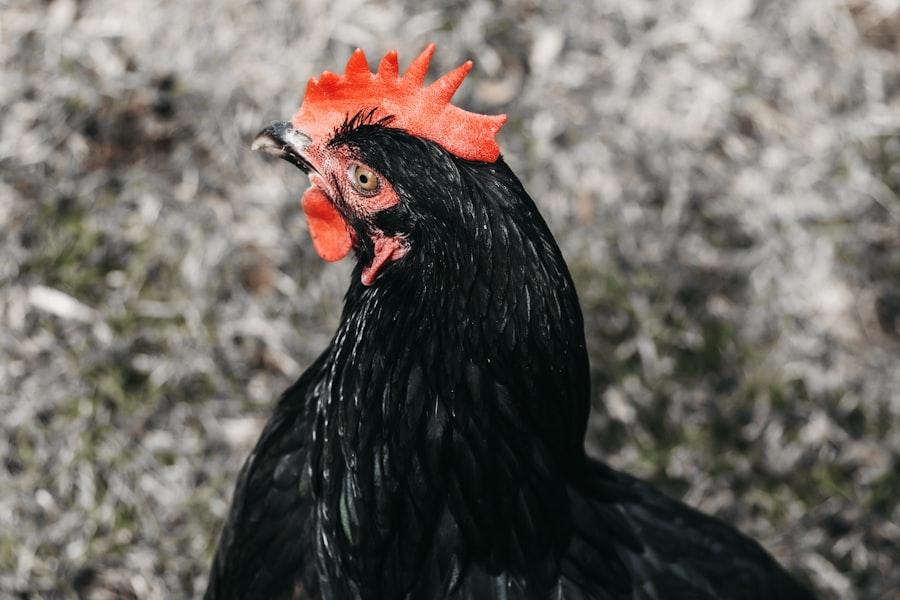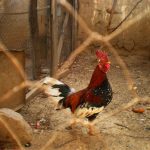Chicken keeping has gained popularity as a hobby among individuals in both rural and urban settings. This practice offers several advantages, such as access to fresh eggs, natural pest management, and the enjoyment of caring for sociable and amusing animals. Chickens are generally considered low-maintenance pets and can be a valuable addition to many households.
However, it is crucial to comprehend the expenses associated with chicken keeping to determine its feasibility and long-term sustainability. Potential chicken keepers should consider costs such as housing, feed, veterinary care, and any necessary permits or licenses required by local regulations. By understanding these financial aspects, individuals can make informed decisions about whether chicken keeping aligns with their resources and lifestyle.
Table of Contents
- 1 Initial Setup Costs
- 2 Annual Feed Costs
- 3 Coop Maintenance and Bedding
- 4 Veterinary Care and Medications
- 5 Egg Production and Potential Income
- 6 Conclusion and Overall Annual Expenses
- 7 FAQs
- 7.1 What are the annual costs of keeping about a dozen chickens?
- 7.2 What are the main expenses associated with keeping chickens?
- 7.3 How much does chicken feed cost annually for a dozen chickens?
- 7.4 What are the healthcare costs for keeping chickens annually?
- 7.5 What are the infrastructure costs for keeping chickens annually?
- 7.6 Are there any other annual costs associated with keeping chickens?
Key Takeaways
- Keeping chickens can be a rewarding and cost-effective hobby for those interested in sustainable living and fresh eggs.
- Initial setup costs for keeping chickens include purchasing a coop, feeders, waterers, and heat lamps, as well as the cost of the chickens themselves.
- Annual feed costs for chickens can vary depending on the number of chickens and the type of feed used, but can be a significant expense.
- Coop maintenance and bedding costs should be factored in, including the cost of cleaning supplies, bedding material, and any necessary repairs to the coop.
- Veterinary care and medications may be necessary for chickens, so budgeting for potential health expenses is important for overall annual expenses.
Initial Setup Costs
Initial Setup Costs
First and foremost, you will need to invest in a chicken coop. The size of the coop will depend on the number of chickens you plan to keep, but it’s important to ensure that each chicken has at least 2-3 square feet of space. Additionally, you will need to purchase a feeder and waterer, as well as nesting boxes for the hens to lay their eggs. Other initial setup costs may include fencing to create a safe outdoor space for the chickens to roam, as well as heat lamps or insulation for colder climates. Overall, the initial setup costs for keeping chickens can range from a few hundred to a few thousand dollars, depending on the size and complexity of the setup.
Ongoing Expenses
In addition to the physical setup, there are also ongoing costs to consider. Chickens require a balanced diet to stay healthy and produce high-quality eggs. This means investing in a good quality chicken feed, which can cost anywhere from $15 to $30 per 50-pound bag, depending on the brand and type of feed.
Feeding and Hydration
Additionally, chickens will need access to fresh water at all times, so it’s important to factor in the cost of water as well. Annual feed costs can add up, especially if you have a larger flock or if you choose to feed your chickens organic or non-GMO feed. It’s important to budget for these ongoing expenses to ensure that you can provide your chickens with the care they need.
Annual Feed Costs

One of the most significant ongoing expenses of keeping chickens is the annual feed costs. Chickens require a balanced diet to stay healthy and produce high-quality eggs. This means investing in a good quality chicken feed, which can cost anywhere from $15 to $30 per 50-pound bag, depending on the brand and type of feed.
Additionally, chickens will need access to fresh water at all times, so it’s important to factor in the cost of water as well. Annual feed costs can add up, especially if you have a larger flock or if you choose to feed your chickens organic or non-GMO feed. It’s important to budget for these ongoing expenses to ensure that you can provide your chickens with the care they need.
In addition to the cost of feed, it’s also important to consider the cost of supplements and treats for your chickens. While a balanced feed will provide most of the nutrients your chickens need, you may also want to supplement their diet with treats such as mealworms, fruits, and vegetables. These treats can provide additional nutrients and help keep your chickens happy and entertained.
However, it’s important to budget for these additional expenses and ensure that any treats you provide are safe and healthy for your chickens.
Coop Maintenance and Bedding
Another ongoing expense of keeping chickens is coop maintenance and bedding. Keeping the coop clean and well-maintained is essential for the health and well-being of your chickens. This means regularly cleaning out the coop, replacing bedding, and ensuring that the coop is free from pests and parasites.
The cost of coop maintenance will depend on the size of your coop and the type of bedding you choose to use. Some common bedding options include straw, wood shavings, and sand. Each type of bedding has its own pros and cons, as well as associated costs.
It’s important to factor in the cost of bedding when budgeting for your annual expenses. In addition to regular maintenance, you may also need to invest in occasional repairs or upgrades to the coop. This could include replacing worn-out roofing or siding, reinforcing fencing, or adding additional ventilation or insulation.
These costs can vary depending on the age and condition of your coop, as well as any specific needs or challenges you may encounter. It’s important to budget for these potential expenses to ensure that you can provide your chickens with a safe and comfortable living environment.
Veterinary Care and Medications
Just like any other pet, chickens may require veterinary care and medications from time to time. While chickens are generally hardy animals, they can still be susceptible to various health issues such as respiratory infections, parasites, or injuries. It’s important to have a budget set aside for potential veterinary expenses, including routine check-ups and vaccinations, as well as unexpected illnesses or injuries.
Additionally, you may also need to invest in medications such as dewormers or antibiotics if your chickens become ill. In addition to veterinary care, it’s also important to consider the cost of preventative measures such as parasite control and biosecurity. This may include investing in products such as diatomaceous earth or herbal supplements to help keep your chickens healthy and free from pests.
It’s important to be proactive in caring for your chickens’ health and well-being, which may require additional investments in preventative care.
Egg Production and Potential Income

Egg Production and Surplus
A small flock of hens can provide a steady supply of fresh eggs, with the potential for a surplus. This surplus can be consumed by the household or sold to friends, family, or local markets.
Selling Eggs and Generating Income
Selling eggs can be a great way to offset the costs associated with keeping chickens and even generate a small income. This can be a profitable venture, especially for those who are willing to invest time and effort into marketing and selling their eggs.
Breeding and Raising Chicks
Some chicken owners may also choose to breed their hens and sell chicks or pullets. This can be another potential source of income for those who are interested in expanding their flock or helping others start their own chicken-keeping journey. However, it’s essential to carefully consider the time and resources required for breeding and raising chicks before pursuing this avenue.
Conclusion and Overall Annual Expenses
In conclusion, keeping chickens can be a rewarding and enjoyable hobby with numerous benefits. However, it’s important to carefully consider the costs associated with keeping chickens to ensure that it is a feasible and sustainable endeavor. From initial setup costs such as coops and feeders to ongoing expenses such as feed, coop maintenance, veterinary care, and potential income from egg production, there are several factors to consider when budgeting for annual expenses.
Overall, the annual expenses of keeping chickens can vary depending on factors such as the size of your flock, the quality of care you provide, and any potential income from egg sales or breeding. It’s important to carefully consider these factors when planning for your annual expenses and ensure that you can provide your chickens with the care they need while also maintaining a sustainable budget for yourself. With careful planning and consideration, keeping chickens can be a fulfilling and financially feasible endeavor for many people.
If you’re considering keeping about a dozen chickens, you’ll need to think about the annual cost of maintaining them. According to a helpful article on Poultry Wizard, the cost of keeping a dozen chickens annually can vary depending on factors such as feed, bedding, and healthcare. For more information on where to put your chicken coop and how to design a farmhouse chicken coop, check out their informative articles here and here.
FAQs
What are the annual costs of keeping about a dozen chickens?
The annual costs of keeping about a dozen chickens can vary depending on factors such as feed, bedding, healthcare, and infrastructure. On average, the annual cost can range from $300 to $500.
What are the main expenses associated with keeping chickens?
The main expenses associated with keeping chickens include feed, bedding, healthcare (vaccinations, deworming, etc.), coop maintenance, and infrastructure (fencing, nesting boxes, etc.).
How much does chicken feed cost annually for a dozen chickens?
The annual cost of chicken feed for a dozen chickens can range from $150 to $250, depending on the type of feed and any additional supplements or treats.
What are the healthcare costs for keeping chickens annually?
The healthcare costs for keeping chickens annually can vary, but on average, it can range from $50 to $100 for vaccinations, deworming, and any necessary medications.
What are the infrastructure costs for keeping chickens annually?
The infrastructure costs for keeping chickens annually can vary depending on the size and quality of the coop, fencing, nesting boxes, and other necessary equipment. On average, it can range from $100 to $150.
Are there any other annual costs associated with keeping chickens?
Other annual costs associated with keeping chickens may include bedding (straw, wood shavings, etc.), cleaning supplies, and any additional equipment or accessories for the chickens’ well-being. These costs can vary but are typically minimal compared to feed, healthcare, and infrastructure expenses.
Meet Walter, the feathered-friend fanatic of Florida! Nestled in the sunshine state, Walter struts through life with his feathered companions, clucking his way to happiness. With a coop that’s fancier than a five-star hotel, he’s the Don Juan of the chicken world. When he’s not teaching his hens to do the cha-cha, you’ll find him in a heated debate with his prized rooster, Sir Clucks-a-Lot. Walter’s poultry passion is no yolk; he’s the sunny-side-up guy you never knew you needed in your flock of friends!







